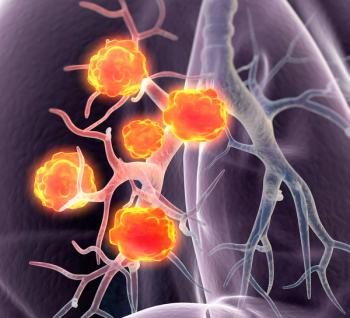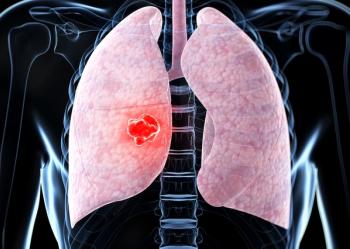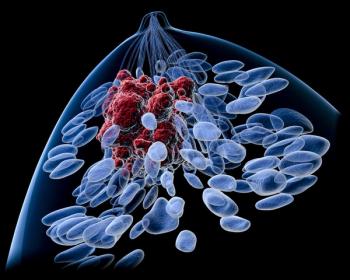
European Commission Grants Marketing Authorization to Obe-Cel in R/R B-ALL
Results from the phase 1b/2 FELIX trial demonstrated that obe-cel was efficacious and safe as therapy for relapsed/refractory B-cell precursor acute lymphoblastic leukemia.
The European Commission has granted marketing authorization to obecabtagene autoleucel (obe-cel; Aucatzyl) for the treatment of patients 26 years or older with relapsed/refractory B-cell precursor acute lymphoblastic leukemia (B-ALL), according to a press release from the developer, Autolus Therapeutics.1
In May 2025, the European Medicines Agency’s Committee for Medicinal Products for Human Use (CHMP)
The approval was supported by results from the
In cohort 2A, with a median follow-up of 20.3 months, the incidence of overall remission among patients who received 1 or more infusions of obe-cel was 77% (95% CI, 67%-85%), 55% (95% CI, 45%-66%) of whom had complete remission and 21% (95% CI, 14%-31%) of whom had complete remission with incomplete hematologic recovery. The median duration of response was 14.1 months (95% CI, 8.2-not evaluable [NE]). The median event-free survival (EFS) was 9.0 months (95% CI, 6.1-15.0).
In the intention-to-treat population, the incidence of overall remission was 64.3% (95% CI, 54.7%-73.1%) among those in cohort 2A (n = 112) and was 64.7% (95% CI, 56.6%-72.3%) among all those enrolled in FELIX (n = 153).
In all patients who received at least 1 infusion of obe-cel, the median duration of response was 21.2 months (95% CI, 11.6-NE). The median EFS was 11.9 months (95% CI, 8.0-22.1), and the estimated 6- and 12-month EFS rates were 65.4% and 49.5%, respectively. Patients with low, intermediate, and high bone marrow burden before lymphodepletion had a 12-month EFS of 68% (95% CI, 48%-82%), 55% (95% CI, 39%-68%), and 25% (95% CI, 12%-41%), respectively.
The median overall survival (OS) was 15.6 months (95% CI, 12.9-NE), with an estimated 6- and 12-month OS rate of 80.3% and 61.1%, respectively. Patients with low, intermediate, and high bone marrow burden before lymphodepletion had a 12-month OS of 72% (95% CI, 53%-84%), 59% (95% CI, 44%-71%), and 55% (95% CI, 38%-69%), respectively.
“We believe [obe-cel] represents an important new treatment option for physicians treating adult [patients with relapsed/refractory] B-ALL,” said Christian Itin, MD, PhD, CEO of Autolus, in the press release.1 “With the EU [European Union] marketing authorization, we are now evaluating market entry opportunities in EU countries.”
FELIX enrolled a total of 153 patients with relapsed/refractory B-ALL, of whom 127 received at least 1 dose of obe-cel. All patients underwent leukapheresis to allow manufacture of obe-cel, and bridging therapy was permitted at the investigator’s decision. Obe-cel was given in a bone marrow burden–adjusted split dose following lymphodepletion, with a bone marrow assessment mandated before lymphodepletion; the second dose of obe-cel was only given in the absence of severe or unresolved toxicity.
Of the 127 patients, 59.8% (n = 76) received 10 x 106 chimeric antigen receptor (CAR) T cells as dose 1 and the remaining 40.2% (n = 51) received 100 x 106 CAR T cells as dose 1. Further, 94.5% received both planned doses.
Eligible patients were 18 years or older with relapsed/refractory CD19-positive B-ALL. It was noted by the investigators that Black patients were underrepresented in the trial.
In the phase 1b portion of the trial, there were 2 cohorts: cohort 1A, which enrolled patients with morphologic disease, defined as 5% or more bone marrow blasts, and cohort 1B, which enrolled patients with minimal residual disease (MRD), defined as less than 5% bone marrow blasts. In the phase 2 portion of the trial, there were 3 cohorts: cohort 2A, the main pivotal cohort, which enrolled patients with morphologic disease at enrollment; cohort 2B, which enrolled those with MRD; and cohort 2C, which enrolled those with isolated extramedullary disease.
The trial’s primary end point was overall remission in cohort 2A. The key secondary end point was complete remission in cohort 2A. Additional secondary end points included remission duration, EFS, MRD-negative remission, OS, progression-free survival, relapse-free survival, and safety.
Regarding safety, the most common nonlaboratory grade 3 or higher adverse events were infections with pathogen unspecified (32%), febrile neutropenia (24%), and bacterial infectious disorders (11%). Cytokine release syndrome (CRS) of any grade and grade 3 or higher occurred in 68.5% and 2.4% of patients, respectively; the median time to onset of CRS was 8 days (range, 1-23) after infusion, and the median duration of CRS was 5 days (range, 1-21). Immune effector cell–associated neurotoxicity syndrome (ICANS) of any grade and grade 3 or higher occurred in 22.8% and 7.1% of patients, respectively; the median time to onset of ICANS was 12 days (range, 1-31) after infusion, with a median duration of 8 days (range, 1-53).
Admissions to an intensive care unit occurred in 15.7% (n = 20 of 127) of patients, with stays lasting a median of 5.5 days (range, 1-37); 7 of 20 patients were admitted due to immune-toxic effects such as ICANS (n = 5) and CRS (n = 2). Two patients died due to obe-cel, with 1 death due to acute respiratory distress syndrome with ongoing ICANS and 1 death due to neutropenic sepsis.
References
- Autolus Therapeutics’ CAR T therapy AUCATZYL (obecabtagene autoleucel) granted European marketing authorization for adult patients (age 26 and older) with relapsed or refractory B-cell precursor acute lymphoblastic leukemia (R/R B-ALL). News release. Autolus Therapeutics plc. July 21, 2025. Accessed July 23, 2025. https://tinyurl.com/murejcsd
- Autolus Therapeutics announces positive CHMP opinion for obecabtagene autoleucel for adult patients (age 26 and older) with relapsed or refractory B-cell precursor acute lymphoblastic leukemia (R/R B-ALL). News release. Autolus Therapeutics plc. May 23, 2025. Accessed July 23, 2025. https://tinyurl.com/7nyrbyb4
- FDA approves obecabtagene autoleucel for adults with relapsed or refractory B-cell precursor acute lymphoblastic leukemia. News release. FDA. November 8, 2024. Accessed July 23, 2025. https://shorturl.at/PIUIf
- Roddie C, Sandhu KS, Tholouli E, et al. Obecabtagene autoleucel in adults with B-cell acute lymphoblastic leukemia. N Engl J Med. 2024;391(23):2219-2230. doi:10.1056/NEJMoa2406526
Newsletter
Stay up to date on recent advances in the multidisciplinary approach to cancer.

















































































